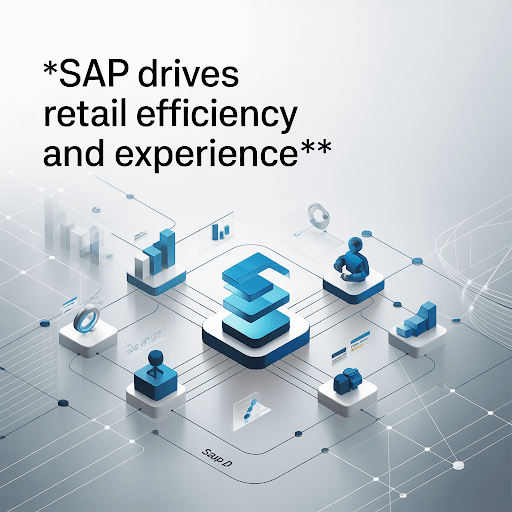
In an era where digital sophistication defines success, Sravanthi Beereddya distinguished contributor to research on enterprise technologiesoffers a compelling perspective on how integrated digital platforms are reshaping the retail sector. Her work explores the transformative power of SAP’s unified solutions in tackling two of retail’s most complex challenges inventory management and customer experience.
Rewriting the Rules of Inventory Management
Modern retail demands precision and traditional inventory systems no longer suffice in a dynamic marketplace. At the core of SAP’s innovation is a predictive inventory management model that transcends basic stock tracking. Using real-time analytics and historical data, it anticipates consumer demand with remarkable accuracy. This shift enables retailers to maintain optimal stock levels, reduce overhead costs, and minimize waste.
SAP’s systems also support the intricacies of product variation and seasonal demand. Whether it’s fashion cycles or holiday peaks, the technology manages multifaceted inventory assortments effortlessly. Additionally, integration with supplier performance metrics ensures that replenishment strategies are agile, just-in-time, and responsive to real-world conditions. The result is a dynamic supply chain that supports both strategic growth and everyday efficiency.
Customer Experience, Reimagined
Gone are the days of one-size-fits-all marketing. SAP’s tools, notably its Commerce Cloud and Customer Activity Repository (CAR), equip retailers with the power to understand individual customer journeys in granular detail. By unifying data from mobile apps, social platforms, and physical stores, SAP creates a continuous, personalized dialogue with consumers.
This omnichannel architecture ensures seamless interactions, enabling customers to shift effortlessly between digital and physical spaces. AI-driven engines offer product recommendations tailored to past behaviors, demographics, and even external factors like local weather. The result? Conversion rates and average order values that steadily climb as customers feel seen and understood.
The Intelligence Behind Real-Time Pricing
Price strategy in today’s competitive landscape is a living, breathing entity. SAP’s real-time pricing engine analyzes variables such as inventory availability, competitor pricing, and customer segments to fine-tune pricing on the fly. Retailers using this system can respond instantly to market shifts, maximizing margins without alienating price-sensitive customers.
This capability also transforms promotional strategies. Campaigns become data-backed, hyper-targeted events rather than broad-stroke sales. Integrated systems help align pricing and stock levels, reducing promotional waste and ensuring products are not only marketed effectively but also available in-store or online when needed.
One Ecosystem, Infinite Possibilities
The hallmark of SAP’s retail architecture lies in its integration. Instead of isolated systems managing inventory, customer engagement, and pricing separately, SAP synchronizes them into one cohesive network. This creates a feedback loop where customer behaviors inform inventory strategies, stock levels dictate promotional cadence, and pricing reflects both demand and availability.
Such coordination not only reduces customer disappointment but streamlines internal operations. Departments can collaborate in real time, adjusting to supply chain disruptions or unexpected spikes in demand with agility and precision. This unified infrastructure supports strategic agility, operational savings, and a superior customer experience all at once.
Redefining Personalization Through Segmentation
Segmentation within SAP’s platform moves beyond demographics. Behavioral patterns, brand engagement, and contextual factors like time and geography enable ultra-targeted marketing. This ensures that promotions, product placements, and experiences resonate deeply with the intended audience.
Privacy, a critical concern in the digital age, is embedded in SAP’s architecture. Consent management and data governance tools maintain transparency, fostering trust and encouraging users to share more data thereby enriching personalization and enhancing business intelligence.
A Roadmap for the Future of Retail
As the retail environment grows more intricate, SAP’s integrated suite of technologies stands as a blueprint for future-ready business models. From warehouse accuracy to individualized online experiences, this ecosystem delivers across every operational and consumer-facing domain.
He captures this vision with clarity and depth, illustrating how a strategic embrace of technological integration can empower retailers not just to adapt but to lead. As digital expectations rise and competition intensifies, the insights she presents chart a path toward resilient, intelligent retail operations.
In conclusion, by combining real-time data, AI-powered analytics, and seamless system integration, SAP is setting the stage for a smarter retail experience one where operational excellence and personalized service are no longer mutually exclusive. Through her work, Sravanthi Beereddy sheds light on the innovations redefining how retailers think, act, and succeed in a connected world.
-
Now the mobile itself will tell – “Whose call is!” Life will be easier than before

-
OnePlus Nord 4 5G Gets Massive Discount on This Platform Ahead of Nord 5 Launch, Now available for Rs 17,000; Check Specs | Technology news

-
Neeraj Chopra seeks first major title of season, up against Julian Weber in Paris Diamond League

-
India to evacuate its nationals from Israel

-
There will be shame to English speakers in the country, Amit Shah said a big thing, people who are spoken in the country will feel ashamed, Amit Shah Said Somenting Big
